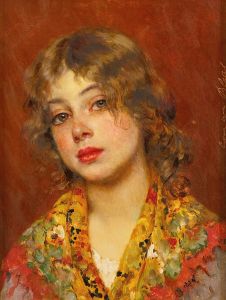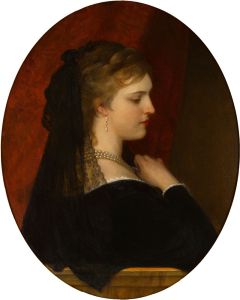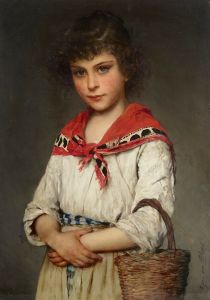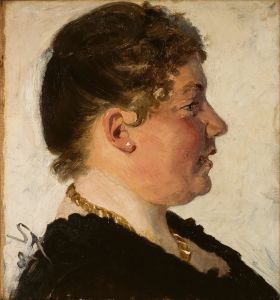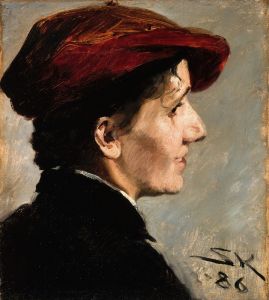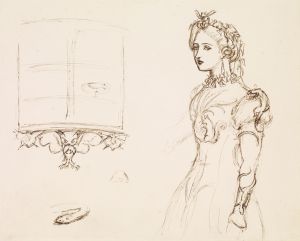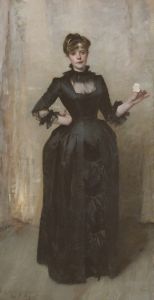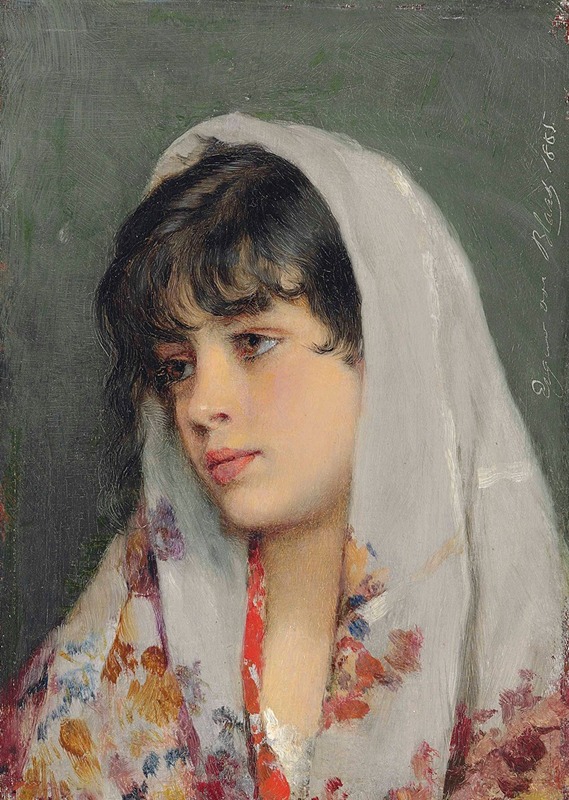
A Venetian beauty
A hand-painted replica of Eugen von Blaas’s masterpiece A Venetian beauty, meticulously crafted by professional artists to capture the true essence of the original. Each piece is created with museum-quality canvas and rare mineral pigments, carefully painted by experienced artists with delicate brushstrokes and rich, layered colors to perfectly recreate the texture of the original artwork. Unlike machine-printed reproductions, this hand-painted version brings the painting to life, infused with the artist’s emotions and skill in every stroke. Whether for personal collection or home decoration, it instantly elevates the artistic atmosphere of any space.
"A Venetian Beauty" is a painting by the Austrian-Italian artist Eugen von Blaas, also known as Eugene de Blaas. Born on July 24, 1843, in Albano Laziale, Italy, von Blaas was renowned for his genre paintings, particularly those depicting Venetian life. His works are characterized by their detailed realism and vibrant portrayal of everyday scenes.
Eugen von Blaas was the son of Karl von Blaas, a well-known history painter and professor at the Academy of Fine Arts in Vienna. Under his father's tutelage, Eugen developed his artistic skills and later studied at the Academy of Fine Arts in Venice. His early exposure to art and rigorous training significantly influenced his style and technique.
"A Venetian Beauty" exemplifies von Blaas's fascination with Venetian subjects, a theme that recurs throughout his oeuvre. The painting captures a young Venetian woman, embodying the grace and elegance typical of von Blaas's female figures. The artist's meticulous attention to detail is evident in the woman's attire, the texture of her clothing, and the delicate rendering of her facial features.
Von Blaas's ability to capture the essence of Venetian life is further highlighted by the setting of the painting. The background often includes elements that hint at the city's unique architecture and atmosphere, though in "A Venetian Beauty," the focus remains primarily on the subject herself. This approach allows viewers to appreciate the beauty and individuality of the woman, while still being subtly reminded of the Venetian context.
The artist's use of color and light in "A Venetian Beauty" is particularly noteworthy. Von Blaas employs a soft, natural palette that enhances the lifelike quality of the painting. The interplay of light and shadow adds depth and dimension, bringing the subject to life and creating a sense of immediacy and presence.
Throughout his career, von Blaas exhibited his works widely, gaining recognition and acclaim in both Italy and Austria. His paintings were featured in numerous exhibitions, including those at the Royal Academy in London and the Paris Salon. "A Venetian Beauty" is one of many works that contributed to his reputation as a master of genre painting.
Eugen von Blaas continued to paint until his death on February 10, 1931, in Venice. His works remain highly regarded for their technical excellence and their ability to capture the charm and character of Venetian life. "A Venetian Beauty" stands as a testament to von Blaas's skill and his enduring fascination with the people and culture of Venice.






